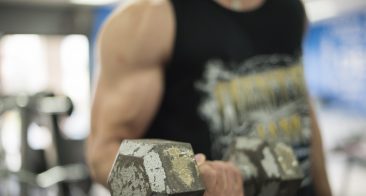Eating disorders are life-threatening illnesses that do not discriminate. Whilst common stereotypes revolve around teenage girls dying to lose weight and achieve their dream figure or goal weight, this can also be true for males.
Large population studies suggest that almost a quarter of people suffering with anorexia nervosa or bulimia nervosa are male, and almost an equal number of males and females suffer with binge eating disorder.
The National Eating Disorder Association in the US report that one million men suffer from an eating disorder, but only 10 per cent of those men seek treatment.
These numbers could be even higher due to what is often referred to as a double stigma for males.
Harmful stereotypes position males with the belief that they cannot ask for help or that they will be stigmatised for stepping forward and seeking assistance for a “female illness”.
How are male eating disorders different?
The common risk factors of eating disorders including perfectionism, bullying dieting and trauma apply to both genders and the onset of eating disorder traits is generally between the late teens and early twenties.
Body dissatisfaction and sociocultural influencers drive both male and female eating disorders. While females are usually chasing a lower body weight, it is often more complex for males.
The National Eating Disorder Collaboration report that sociocultural influences play a key role in the development of eating disorders.
For males these include the belief that there is only one body type that a male should have – this is portrayed in the media as a lean and muscular physique.
Traditional gender roles also dictate that males need to be in control and are often expected to take charge. Eating disorder risk factors increase when males tie having the ideal body to success in other areas of their life such as dating, popularity or career progress.
If these areas of their life begin to slip, fear and anxiety may be placed onto their body to manifest control through excessive exercise and dieting.
Are athletes at risk?
If males are susceptible to sociocultural influencers and strive towards the ideal body type, does this increase the risk of professional athletes?
For some athletes, heightened concerns about masculinity and muscularity or hyper muscular physiques can form part of an eating disorder.
Eating Disorders Victoria report that athletes with eating disorders may partake in unhealthy and potentially dangerous activities such as restrictive dieting, extreme exercise and/or anabolic steroid use.
What are the warning signs?
For many people, warning signs are often discreet and met with a reluctance to seek help – this is especially true for males who associate eating disorders with females.
The warning signs for males can include:
• Preoccupation with weight training and muscle growth/toning
• Exercising when sick or injured
• Anxiety over missing workouts
• Lowered testosterone
• Muscular weakness
Sociocultural influencers that view excessive exercise and the extreme pursuit of muscle growth as healthy behaviours for males can cause conflict when diagnosing eating disorders.
These behaviours may also be encouraged by peers.
With male eating disorders often going untreated for longer periods than females, it’s important we start to view these unhealthy behaviours in a new light.
If you or someone you know is suffering, please reach out to us. We regularly receive emails and messages from people seeking guidance and assistance with their struggles. We have a full list of professional contacts who are able to put you in touch with the right people.








